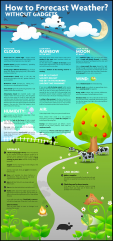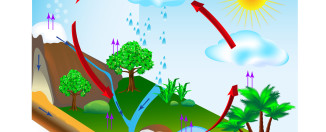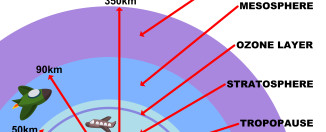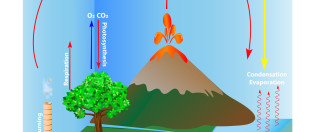Levels of the Atmosphere
Our atmosphere is a shell of gas that surrounds the planet earth and protects its living creatures, including us, from the dangers of open space. It is made up mostly of nitrogen gas, a little oxygen, a little bit of argon, and other gases, like CO2, in tiny percentages. It also has layers, each with different characteristics.
Troposphere: surface to 9-17 km (average 12 km)
The troposphere is the level that we live in and airplanes fly planes in. In the troposphere, air becomes cooler with altitude, since heat in this layer rises up from the earth. Almost all clouds form in this layer because they can’t float up higher than the top of the troposphere, called the tropopause, and because almost all the water vapor in the atmosphere is held in the troposphere.
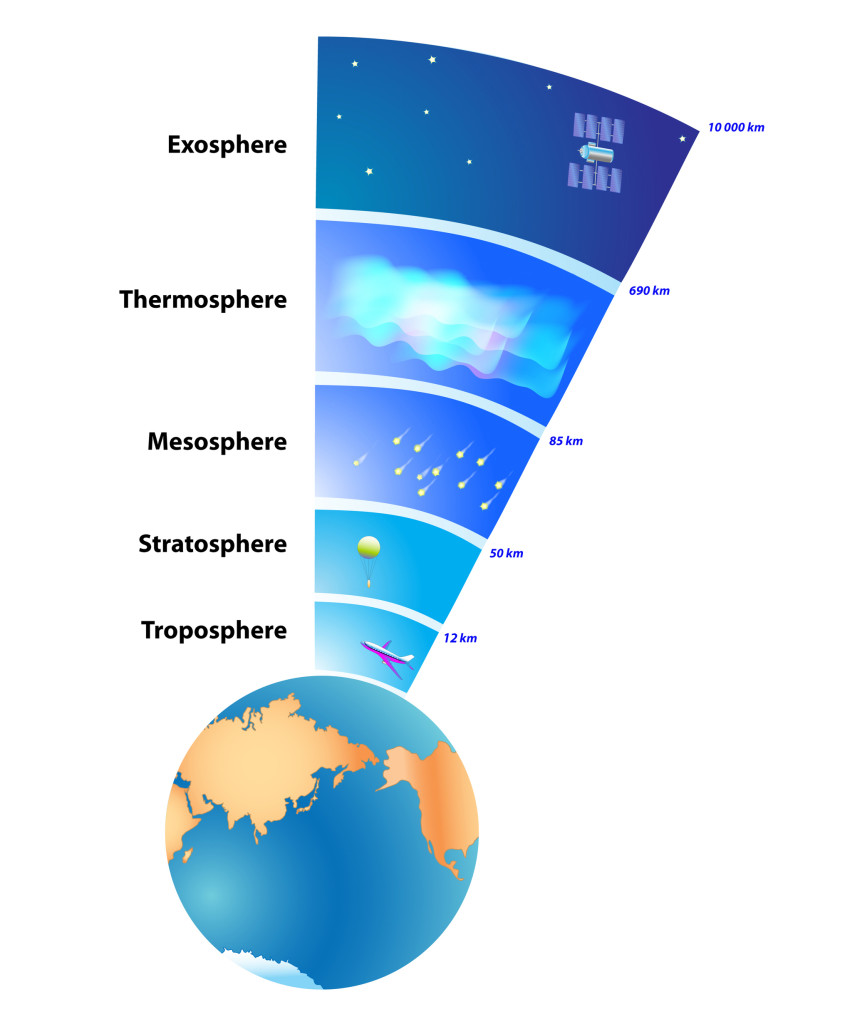 Stratosphere: 12- 50 km
Stratosphere: 12- 50 km
Only jet airplanes can fly in the thin air of the stratosphere. This level contains the ozone layer, which is a layer of O3 gas that absorbs much of the ultraviolet (UV) rays from the sun. Unlike in the troposphere, the stratosphere is warmed by the ozone layer so temperatures here get colder moving both up and down away from the ozone layer.
Mesosphere: 50- 80km
The mesosphere is the third level up from the ground. Here, the air is too thin for jets to fly in and only rockets can fly through it. In the mesosphere, just like the troposphere, temperatures rise as altitude increases.
Thermosphere: 80- 700 km
The thermosphere is the layer that hosts the auroras, the Northern and Southern Lights, which results from solar wind striking its molecules. These molecules are heated by solar radiation so that higher molecules are hotter, however there are so few air molecules so spread out in this level, there aren’t enough molecules close together to breath or to warm a person’s body.
Exosphere: over 700 km
Above the thermosphere the exosphere begins. This level is thousands of kilometers thick, yet it contains so few molecules that they no longer produce pressure or behave like gases and are constantly drifting off into outer space.


